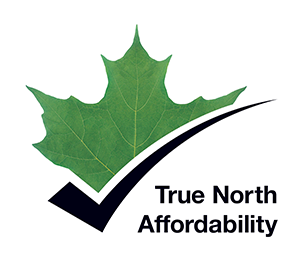Let me be very clear: Just because local prices may be higher than in other places, doesn’t mean a particular good or service is unaffordable at home. There are lots of things for which Canadians pay more than our peers to the south, or other countries. An awful lot of things. Some are basic needs, like milk, eggs and poultry. Some are everyday items like fuel or alcohol or electronics. We gripe about paying more, but the vast majority of us can afford to pay the price.

For most Canadians, mobile services are affordable.
There. I said it.
The affordability of mobile service is measurable. Every quarter, more Canadians are subscribing than ever before, meaning more Canadians are finding a mobile plan they feel they can afford. Quarterly financial results are showing increasing numbers of Canadians are upgrading their service plans, increasing their monthly bills because the new data packages deliver more affordable value. I know. It sounds like an oxymoron to say people are increasing their monthly spending because they are getting more value.
As I wrote a couple weeks ago, PwC recently produced a couple reports showing that “Canadian mobile services top G7 affordability ranking”. It is a headline that must have made many heads explode since it is completely contrary to the popular narrative. Looking at the data, PwC examined the affordability of wireless services for Canadians in proportion to income and compared that to other jurisdictions. In addition, PwC considered discretionary spending by Canadians, testing whether household budgets were being strained by spending on mobile plans. It turns out that household discretionary spending increased in every income quintile; at every level of income, year over year people had more money left over to spend on fun stuff, even after paying for their communications bills.
So, while we all might want our monthly bills to come down (and who wouldn’t want to pay less for everything we pay for?), the vast majority of Canadians are paying for mobile service that they felt they could afford when they signed up, and they continue to pay their bills each month.
And indeed, last week the CRTC released the results of its own survey and found that 83% of Canadians were satisfied with their current service provider, with 35% saying they are very satisfied.
So, can we please stop the empty rhetoric about “too much pressure” on the average Canadian’s household budget? It is distracting from the real question of affordability for that segment of Canadians who truly can’t afford a smart phone and can’t handle the price of a mobile voice and data plan. There is a real problem for a number of low income households. Their calls for help are getting lost amid the populist noise calling for across the board price reductions. Lowering prices or increasing data volumes for the same price doesn’t change the calculus for a household at the margins trying to choose between the luxury of President’s Choice macaroni and cheese or the yellow box No Frills version once again.
Those are the Canadians for whom we need to talk about affordability. That conversation just isn’t happening.
In the CRTC’s upcoming Review of Mobile Services, the Coalition for Cheaper Wireless Service has proposed that carriers be mandated to offer an income-tested mobile services plan with unlimited Canada-wide voice and texting, and 4GB per month of data at LTE speeds for $25-30 per month. The coalition was silent on the subject of how the low income household gets a hold of an affordable LTE compatible device. There is a lot of merit to a targeted affordability program. I am not crazy about having just one plan available for these households; I would prefer to see a portable direct subsidy for those who need the social assistance and allow them to select the best plan to meet their specific needs. It is also my view that no specific plan should be prescribed in a regulatory decision because of the potential for the market to make any plan obsolete.
Funding such a plan could be the subject of many more blog posts: should it be funded by a general tax on telecom revenues, like the Broadband Fund; or, perhaps it should be funded by social service government programs? By way of example, Ontario’s Electricity Support Program may be a useful model to examine.
In any case, we also need to work out a solution to get affordable devices into the hands of lower income households. That is a non-trivial challenge.
For many, we still need to show them the basics. There are too many who don’t see the value of a mobile broadband service at any price.
Our national digital strategies have to consider gaps in service adoption with the same focus as programs that target service availability. There are far more people who have access to service but haven’t subscribed, than there are people living in unserved territories.
Canada needs to talk more seriously about increasing adoption of digital technologies and services in lower income households. So far, there has been too much noise to hear about the real problems, let alone develop real solutions. We need to change that.
We need to talk seriously about affordable wireless.
